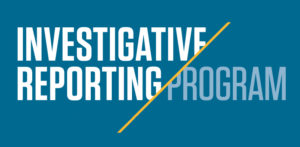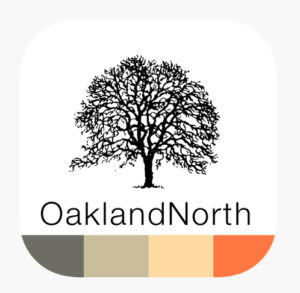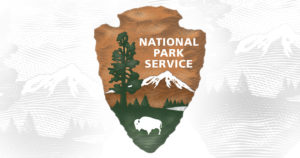Learn more about my journalistic work and experience here. To view a copy of my résumé, click below.
 The Associated Press and Report for America
The Associated Press and Report for America
I’m a member of the 2020-21 Report for America corps covering the Indiana Statehouse for The Associated Press. I work as an Indianapolis-based watchdog reporter covering elections, with focuses on the state attorney general’s race and on U.S. House District 5. During the legislative session, my reporting centers around the state’s response to COVID-19, K-12 funding, environmental and law enforcement issues, and the effects of state policies on local districts. Report for America is a national service program that places journalists into local newsrooms to report on under-covered issues and communities. An initiative of the nonprofit media organization, The GroundTruth Project, it is structured to harness the skills and idealism of an emerging group of journalists plus the creative spirit of local news organizations.
 The New York Times
The New York Times
Through a collaboration between Berkeley’s Investigative Reporting Program and The New York Times, I reported on the coronavirus pandemic in California and the West, with a special focus on Santa Clara County. Daily reporting and data collection allowed me to report out ways state and local governments were responding, how medical facilities were coping, whether public health measures were working, and where the safety net was failing. On-the-ground coverage followed the county’s approach to enforcing one of the state’s strictest shelter-in-place orders (the story was printed on the front page of the Times’ print edition), as well as in-depth reporting on California’s zero-bail schedule. Work appeared in The Times’ print and online editions, as well as in its California newsletter.
- How Do You Enforce a Law That Tramples the Land of the Free?: Co-reporting with another j-school student, we chronicled a unique effort by the Santa Clara County district attorney’s office to enforce sheltering-in-place. The piece raises and explores larger questions about law, freedom and discernment. The story, which includes a photo portrait I took inside our lead subject’s home, published in the national section and printed on the front page of The New York Times’ print edition.
 Investigative Reporting Program
Investigative Reporting Program
I worked as the 2019-20 graduate research fellow at the IRP in Berkeley, California. The primary focus of my work involved in-depth reporting, records requests (via PRAs and FOIA), conducting interviews, database creation and management, and collecting and organizing research for my ongoing projects. My reporting focused on law enforcement malpractice in California, juvenile justice in Louisiana, and industry influences on scientific research. I also led a workshop for up-and-coming investigative journalists, centered around reporting on the assisted living industry. Through the IRP, I was also a reporter for the California Reporting Project — a coalition of more than 30 news organizations across the state gathering and reporting on police misconduct records made newly available by SB 1421 — under the direction of Pulitzer Prize-winning investigative reporter Thomas Peele.
Previously, I was one of five graduate student employees at the IRP. I pursued story leads, submitted records requests, conducted interviews, and collected and organized research. Under Lowell Bergman, the IRP’s founder, I also collected and compiled research for in-depth, investigative memos. Additionally, I assisted with day-to-day operations, including putting my InDesign skills to use.
- Coming soon: An in-depth look at the future of herbicides in the United States.
- Coming soon: Breakthrough reporting on law enforcement disciplinary practices across California.
- Coming soon: Data- and document-driven reporting on fines and fees in Louisiana’s juvenile justice system.
- “The Trials of Gabriel Fernandez” — The six-part Netflix documentary series delves into the 2013 murder of 8-year-old Gabriel Fernandez by his mother, Pearl Fernandez, and her boyfriend, Isauro Aguirre. I assisted with organization and analysis of documents from the Los Angeles County Department of Children and Family Services.
- ‘Like trying to kill a fly with a bazooka’: Police shooting investigation takes nearly three years — Spent multiple months reporting out an officer-involved shooting in Orland, California, via public records requests, courthouse filings and numerous interviews. Also produced video from body camera footage.
- Probe Into Corrupt Cops in Kern County Deepens – Contributed document research and analysis to this story about a law enforcement corruption scandal in Kern County, California.

The Indianapolis Star
Summer 2019, I covered news stories in Indianapolis and across the Hooiser state as a Pulliam Fellow. At the news and investigations desks, my reporting explored topics like new police practices and body cameras, a contentious development proposal in the City of Avon (complete with the petitioners’ views, the council’s voting struggles and the ultimate decision to approve the project), an emotional citizenship ceremony, and allegations of animal abuse at Fair Oaks Farms. Additionally, I worked a weekly breaking news shift where I covered everything from local crime and officer-involved shootings to damaging tornadoes and the governor’s reelection announcement. Over the course of the summer, I published more than 50 pieces across IndyStar’s online and print platforms, as well as throughout USA TODAY and its other local news properties.
- TWO-PART SERIES: 1) Mayor Hogsett promised to reform IMPD. 2 years later, African Americans are still waiting. 2) IMPD used to fatally shoot more people than NYC or Chicago. Here’s what changed. – This in-depth, two-part series involved weeks of reporting, records requests, data collection, interviews and research. Stemming from my breaking news coverage of a fatal officer-involved shooting, the series illuminates police reform and the downward trend in the Indianapolis Police Departments’ fatal shooting incidents. We were able to examine the city police’s actions in a national scope through my creation of a historical database of OISs at police departments across the country.
- Unarmed man shot in back by IMPD officer settles lawsuit for millions – In addition to my daily reporting, one of my projects at the Star involved analyzing and compiling hundreds of city settlement records into an accessible database. During this process, I identified a major settlement — one of the largest in the city’s history — that had just recently concluded and was completely uncovered by media. As such, I lead the story team as we explored the details of the civil case (which followed an officer-involved shooting years earlier) and broke the story.
- A ‘dead zone’ is growing in the Gulf of Mexico. Indiana is partly to blame. – This piece took a national story to the local level and included the legislative and policy implications of Indiana’s efforts (or lack thereof) to reduce nutrient pollution locally and regionally.
- In a first-of-its-kind endeavor, AquaBounty farms country’s bio-engineered salmon in Indiana – The story takes readers behind the scenes at an aquaculture farm in rural Indiana where breakthrough, yet contentious, bio-engineered fish are being raised for the first time in the United States. I explored the science, policy and economic aspects of the farming operation using narrative technique.
- A former Hoosier says he was just doing his job in combat. The Pentagon says he’s a hero. – This narrative-driven piece took a press release and daily news story to the next level. Through interviews with Sgt. Waters, his comrades and his family, I was able to accurately recreate the dramatic scene in Afghanistan that earned the former Hoosier the Distinguished Service Cross.
- Indianapolis police identify man killed in Friday night officer-involved shooting – I led coverage on this breaking news story that resulted in weeks of follow up coverage and a two-part series examining police practice and policy.
 Oakland North
Oakland North
At this hyperlocal news site supported by the UC Berkeley Graduate School of Journalism, I covered all topics relating to science, health and the environment in Oakland, California. During the 2018 midterm elections, I additionally covered the polls around Oakland and served as an editor on election night. Previous stories of mine included reporting on air quality, local health statistics and new state legislation affecting children’s wellness. Although my primary medium is writing, I also took photos, shot and edited video, designed graphics and recorded audio for some of the pieces I worked on. All stories produced at Oakland North were reported independently and on deadlines.
- Oakland’s air quality problem: Can first-of-its-kind legislation solve it? – Through narrative storytelling, this piece goes in-depth on California’s new Community Air Protection Program and the implications the legislative effort might — or might not — have on communities most severely affected by air pollution.
- Cancer, not heart disease, is now leading cause of death in Oakland – Through records requests and data analysis, I put together this comprehensive piece examining mortality statistics in Oakland.
- West Oakland slated to benefit from plan to reduce air pollution – This curtain-raising story helped provide context for upcoming air quality measures set to affect West Oakland.
- Pending legislation aims to limit restaurants from serving sugary drinks to kids – Spent time on the ground in Oakland understanding local impacts and identifying great characters for the story’s lede. The piece outlines recently passed legislation and responses from community members.
 Investigative Reporting Workshop & The Washington Post
Investigative Reporting Workshop & The Washington Post
From May-August 2018, I worked as a research and reporting intern at the Investigative Reporting Workshop in Washington, D.C. There, I worked under the editorship of Chuck Lewis and Lynne Perri. Half of my time as an intern was spent reporting and writing a long-form investigative piece about the Department of the Interior, and the other half was spent in The Washington Post newsroom where I assisted Kimbriell Kelly with the homicide database project. Throughout the summer, I was actively submitting and tracking records requests, analyzing documents and data, conducting interviews, and piecing together stories.
- Murder with Impunity: Washington Post Homicide Database – At The Post, I was responsible for calling police departments around the country, convincing city attorneys to release data, and finding inventive ways to navigate and expedite the record-gathering process. I was also tasked with organizing and maintaining collected data. This project was named a 2019 Pulitzer Prize Finalist for Explanatory Reporting.
- Ben Jealous wins Maryland primary, vows to topple Republican Gov. Larry Hogan – During the summer, I contributed reporting to The Post’s election coverage in Maryland and Virginia. From the early mornings to late afternoons, I interviewed voters and monitored developments at voting stations.
- Interior’s many ‘acting’ positions ‘questionable at best’ – More than six months of reporting resulted in this piece about former Interior Secretary Ryan Zinke’s series of inconspicuous secretarial orders, which served as Federal Vacancies Reform Act workarounds.
 National Park Service
National Park Service
During my senior year at Ball State, I volunteered part-time as a digital content producer for the National Park Service’s website. Through this work, I wrote and edited park-related content for the NPS digital database under the guidance of an editor. The written pieces I produced focused on individual site histories and cultural influences throughout the Park Service. The writing style used for these pieces was often short, concise and easily understandable to a general audience.
 The Ball State Daily News
The Ball State Daily News
Ball State’s award-winning, student-run newspaper, The Daily News, publishes work in a weekly print edition (a daily edition until 2017) and on its website, which is updated around the clock. During my four years spent at The Daily News, I wrote and edited hundreds of stories for the paper. Most recently, I served as the Editor-in-Chief, overseeing a staff of more than 100 students. In this position, I led a 20-person editorial board and was responsible for making all final editorial decisions. I also guided editors and reporters who were taking on complex stories and/or facing First Amendment challenges.
Previously as the senior news editor, I managed a budget, trained up-and-coming reporters, edited daily stories for print and online audiences, and oversaw all breaking news coverage. I was also responsible for leading a team of more than two dozen reporters covering the 2016 election cycle. That coverage was later recognized as the best in the state by the Indiana Collegiate Press Association.
From fall 2015 to spring 2016, I was a chief reporter on the police and general news beats. I composed daily stories during the week and also worked on enterprise pieces over the course of several months at a time. I frequently requested and obtained public records for my reporting, and I covered topics like campus crime and drug use among college students.
- Faculty with Felonies: Where’s the line? – This long-form piece tells the story of a Ball State instructor who once faced life in prison for murder. I was the lead editor for the project and contributed reporting and writing for the piece.
- Humans vs. Zombies player sparks gun scare on campus – This breaking news event involved on-the-spot reporting during a university lockdown, including interviews with witnesses, phone calls to police, making live updates to the story and later submitting records requests for 911 information.
- Ball State’s 17th president bring experience, ready to work with university – Similar to the 2016 election coverage, I led a team of reporters covering the announcement of Ball State’s new president. This involved coordination of pre-reporting efforts, managing a live editor desk and collaborating with the photo and graphics teams.
- TWO-PART SERIES: University police get trained, paid more than Muncie counterpart – For four months, I conducted interviews with officers and dug through public records to learn more about the differences in training, pay and workloads between the campus and city police departments. The resulting long-form stories illuminated why and how city police officers train and earn less than their UPD counterparts, despite having dozens more calls they respond to on their shifts.

National Geographic
From May-August 2017, I worked as a full-time editorial intern at National Geographic by way of the American Society of Magazine Editors Internship Program. While at NatGeo, I pitched stories to editors, reported deadline-driven daily articles for the web and wrote short pieces for consideration in National Geographic Magazine. During the internship, I also worked closely with text editors to identify and practice strong copy editing and digital writing skills. Over the course of the summer, I wrote and published more than 30 stories.
- New Jersey-Size ‘Dead Zone’ Is Largest Ever in Gulf of Mexico – For this piece, I did a quick turnaround on an embargoed scientific study. Within a few hours, I was able to break down the study to determine what information was most important, identify questions and interview the study’s authors/additional subject matter experts, and write the story in a way that was compelling to a digital audience.
- Cats domesticated themselves, Ancient DNA shows – In another embargoed study, I took a more conversational approach with my writing. In doing so, I worked on crafting an engaging lede and making the study more understandable, while still rooted in factual completeness.
- Scientists collect ice cores from glaciers before they disappear – I put together this general science news story on a one-day turnaround and collaborated with the video team for the multimedia component.
![]() USA TODAY and USA TODAY College
USA TODAY and USA TODAY College
I worked as a correspondent for USA TODAY through its college network. From January-June 2017, I pitched stories to editors and composed weekly pieces on deadline. I also spent several months reporting a long-form piece about grade inflation at U.S. colleges and universities. Stories were published on the USA TODAY College website, USA TODAY’s main site page, and sometimes in the USA TODAY print editions.
- What does it really mean to get an A? – This in-depth piece required months of records requests and data analysis. After collecting raw grade distribution information from colleges and universities around the country, I reported the results and created an infographic to illustrate the differences between schools.
- Is this the Golden Age of student activism? – On deadline, I interviewed college students and historians about activism on campuses. The resulting story was published in the USA TODAY print edition and in Gannett papers around the country.
- College student volunteers help build first playground in impoverished Rio favela – While on a reporting trip in Rio de Janeiro, I learned about a playground being built in the Pavao Pavãozinho favela. I conducted interviews and snapped photos on the spot, and I had the story written and ready for my editor within a few hours.
- Do you know where the presidents of the United States went to college? – I composed this alternative structure piece for Presidents Day by using text and images and creating an interactive timeline.
 The Smithsonian Institution – National Museum of the American Indian
The Smithsonian Institution – National Museum of the American Indian
During summer 2016, I interned at The National Museum of the American Indian (NMAI) in Washington, D.C. as a multimedia and research intern. I was responsible for shooting and editing photos and videos before and during events for online packages, and I also monitored and enhanced social media analytics for the museum. A large portion of my summer was also spent conducting research and composing articles for NMAI Magazine and other ongoing multimedia projects at NMAI.
 Drum Corps International
Drum Corps International
I spent summer 2015 as a communications and reporting intern at Drum Corps International (DCI) in Indianapolis, Indiana. As an intern, I developed journalistic and social media content for the official DCI website (DCI.org), its social media platforms and various print publications. Throughout the summer, I interviewed and reported on high-profile individuals and events in the DCI realm, working under strict deadlines. Other responsibilities included tracking DCI.org with analytics tools and pitching feature stories to staff. I also helped make daily updates to the website and produced written and alternative form stories online.
Education
University of California, Berkeley Graduate School of Journalism
- August 2018 – May 2020
- Master of Journalism (MJ) degree
- Concentrations: Narrative science writing and investigative reporting
- GPA: 3.95/4.0
Ball State University, Muncie, Indiana
- August 2014 – May 2018
- Bachelor’s degree
- Majors: Journalism, Telecommunications, Anthropology
- Minor: Spanish
- GPA: 3.85/4.0
- Honors College graduate
Honors and Awards
- National Press Foundation’s Covering the Statehouse Fellowship, spring 2021.
- Journalists in Aging Fellowship, 2020-21.
- Berkeley Food Institute Fellowship, spring/summer 2020.
- Association of Health Care Journalists’ Academic Health Fellowship, spring 2020.
- Water Desk, Center for Environmental Journalism reporting grantee, 2019-2020.
- Communicating Geohazards grantee, fall 2019.
- Earth Journalism Network reporting grantee, spring 2019.
- Phi Kappa Phi Fellowship, spring 2018.
- Indiana Student Journalist of the Year, spring 2018.
- Academic Honors in Writing, Ball State University, spring 2018.
- Berlin Capital Fulbright Scholar, fall 2017.
- Emmy® Nomination for Writing, NATAS Lower Great Lakes Chapter, spring 2017.
- Kenneth Atwell Excellence-in-Reporting Scholarship, Ball State University, spring 2017.
- Pacemaker finalist, Associated Collegiate Press, fall 2017 & fall 2018.
- Columbia Scholastic Press Association
- Society of Professional Journalists
- Indiana Collegiate Press Association
- Third place for news writing, Hoosier State Press Association, fall 2017.
- Editor of the Year, selected by The Daily News staff, spring 2017.
- Keating Competition finalist, fall 2016.
- SPJ Indiana Pro Chapter Scholar, spring 2016.
- Reporter of the Year, selected by The Daily News staff, spring 2016.
- Merrell T. Marshall Memorial Scholarship, Ball State University, spring 2016.
- Earl and Kathryn Congdon Scholarship, 2016-2018.
- Ingelhart Scholar, Ball State University, 2014-2015.
- Presidential Scholar, Ball State University, 2014-2018.
To view examples of my work, click here. Or, view my résumé.